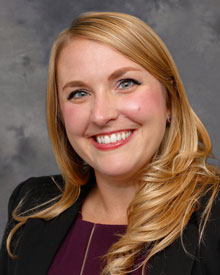Please welcome Dr. Tasha Dunn, one of my colleagues in the UNK Department of Communication with her guest blog post about her upcoming book, Taking Out the “Trash”: Mediated Representations and Lived Experiences of White Working-Class People, coming soon from Routledge Books.
By Tasha R. Dunn
I grew up in a trailer park, recently earned a Ph.D., and make my living digging in the trash. Many people find this hard to believe, especially given the oppressive ways residents of trailer parks—a vast majority of which are white and working-class—are depicted in popular media.
I don’t know about you but I have yet to find a poor or working-class white person portrayed in a positive and empowering manner. Additionally, the fact that I dig in the trash sounds a bit unusual for someone with a Ph.D. but the trash I dig in isn’t literal, it’s symbolic. I dig in “white trash,” which is the most common term used to describe the white working-class population—an irony when considering the current U.S. cultural climate where derogatory labels for a vast majority of minority groups are shunned.
The fact that white working-class people are associated with such a negative label is one of the reasons why I dig in “white trash”—I seek to understand and ultimately challenge it, which I do in my forthcoming book, Taking Out the “Trash”: Mediated Representations and Lived Experiences of White Working-Class People.
I wrote this book because, ever since I can remember, I have felt the weight of media on my shoulders. I remember sitting in front of the TV comparing images of white working class people on screen to my experiences growing up in a white working-class family and neighborhood. I would constantly make comparisons, finding people in films and television shows who both were and were not like me. I embraced our similarities (e.g., I was white, poor, and lived in a trailer), but was bothered by our differences.
I was not stupid. I was not a criminal. I was not excessively sexual. I was not dirty. Yet, because most of the white working-class people on screen were, people assumed I was, too. The “white trash” stereotype had a significant impact on the way I felt others saw me, and how I saw myself. This experience is what led me to write the book which, as the above suggests, analyzes the relationship between mediated representations and lived experiences of the white working-class population.
I begin by analyzing how white working-class people are depicted in media, with a particular focus on reality television because this is the genre where they are featured most often as evidenced by the slew of recent shows such as Here Comes Honey Boo Boo (2011-2014), Swamp People (2010-present), Duck Dynasty (2012-2017), Welcome to Myrtle Manor (2013-2015), Hillbilly Handfishin’ (2011-2012), Appalachian Outlaws (2014-2015), Moonshiners (2011-present), Redneck Island (2012-2016), and more.
Next, I interview and spend time with members of the white working-class to understand how they respond to and deal with the stereotypes and oppressive ideas about this population that are communicated in reality television and other media outlets.
A focus on white working-class people is important, not only because of their increasing presence in media, but also because of their role in fueling the unprecedented rise of Donald Trump—a phenomenon that has made this population a central subject of U.S. cultural discourse.
While the “white trash” stereotype may make it easy to dismiss members of the white working-class population as buffoons—a situation I know all too well—their role in fostering Trump’s success indicates it is time to think in more complex ways about white working-class people than we have in the past, which is exactly what my book intends to do. Rather than relying solely on analyses of mediated portrayals to contribute to understandings of a highly influential population, my book digs deeper in the “white trash” to provide alternative stories that are rarely, if ever, found in popular media; stories that illuminate the multidimensionality of a population that is often portrayed in one-dimensional ways to better understand their role within, and influence upon, U.S. culture.
Come dig in the trash with me by reading my book. While I don’t have the space to fully explain what you will find, what I can say is that you will undoubtedly discover pieces of this population’s story that have been buried and unaccounted for, but are powerful, complex, and important to engage.

